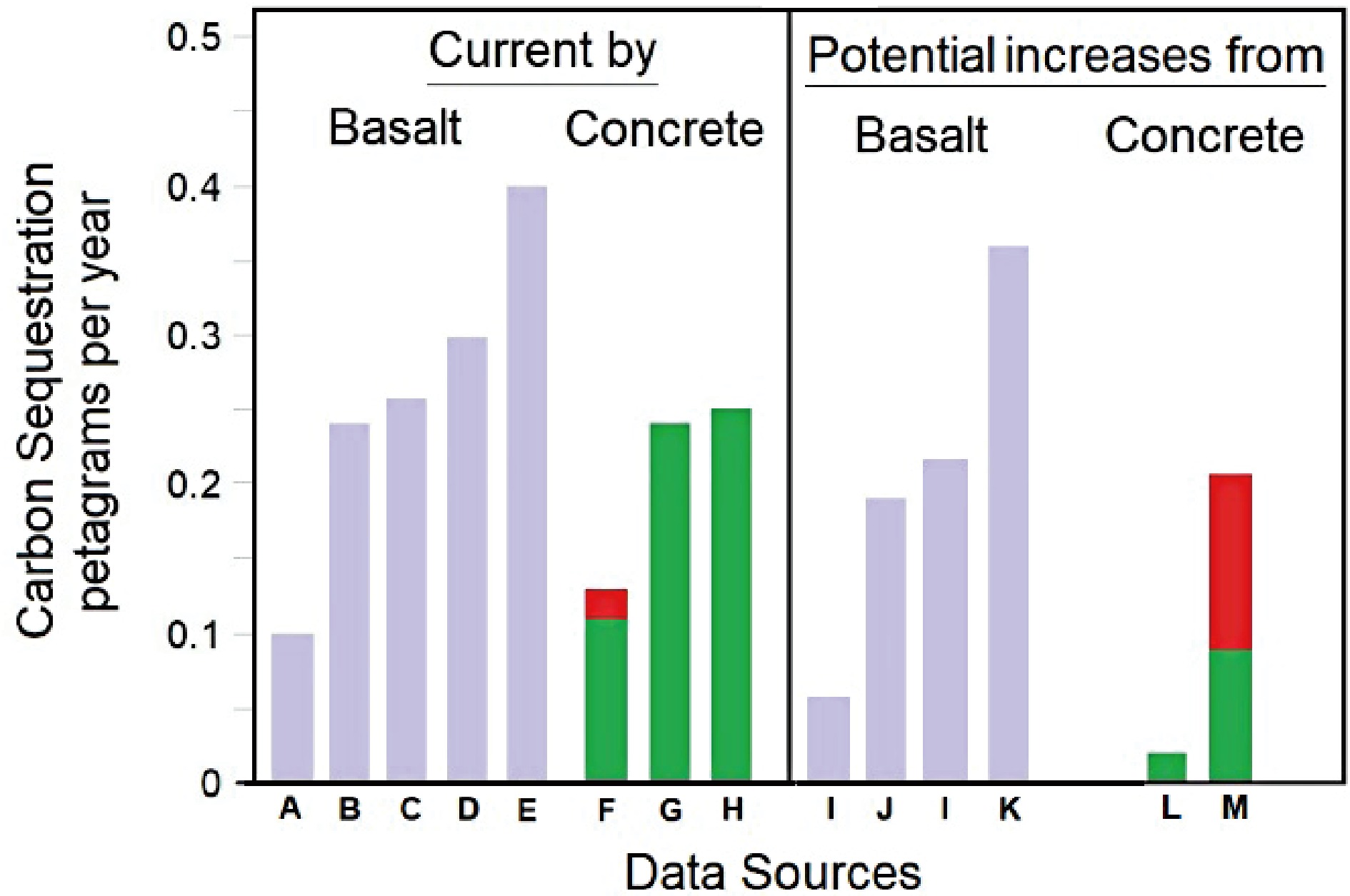-

Figure 1.
Current global C sequestration rates by basaltic minerals and concrete, and potential increases from applying those materials to croplands. Data sources are Seifritz[9], Hartmann et al.[10], Gaillardet et al.[11], Strefler et al.[12], Ciais et al.[13], Cao et al.[20] with the red part of the bars showing C sequestration by ancillary concrete materials, Guo et al.[21], Xi et al.[19], Goll et al. using 20 million km2 of global hinterland[22], Beerling et al.[5] (using 11% of global cropland), Goll et al. using 100 million km2 of global hinterland[22], Beerling et al.[5] (using 22% of global cropland); potential from more extensive cropland utilization is not presented; higher estimates of potential C sequestration rates by basaltic minerals of 1.34 Pg C yr−1 by Strefler et al.[12] and 1.09 Pg C yr−1 by Fuhrman et al.[23] are excluded as those authors did not consider cropland area that would be required, Zhang et al. [24], Renforth et al.[25] with the red part of the bar showing C sequestration by ancillary concrete materials.
Figures
(1)
Tables
(0)